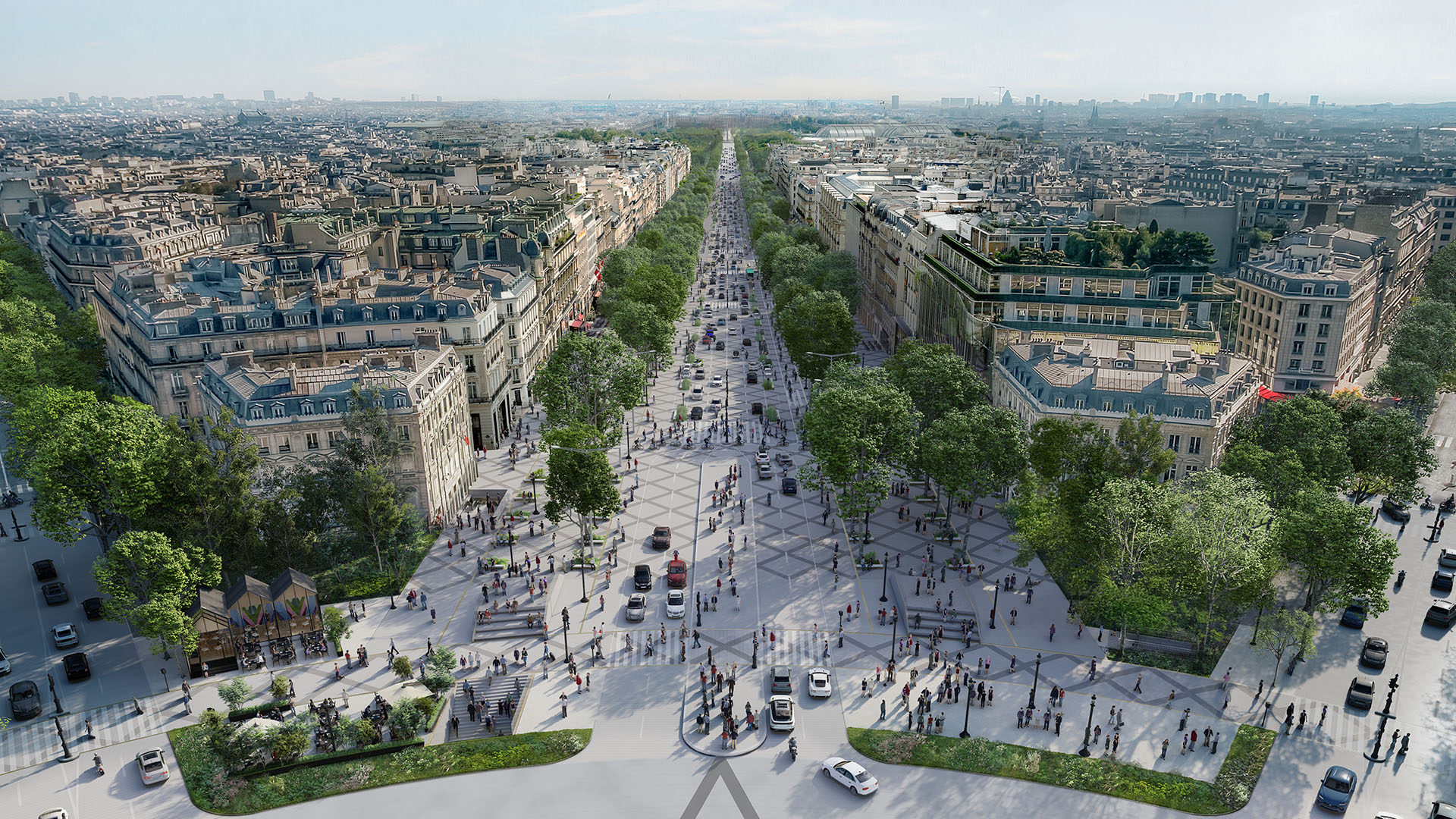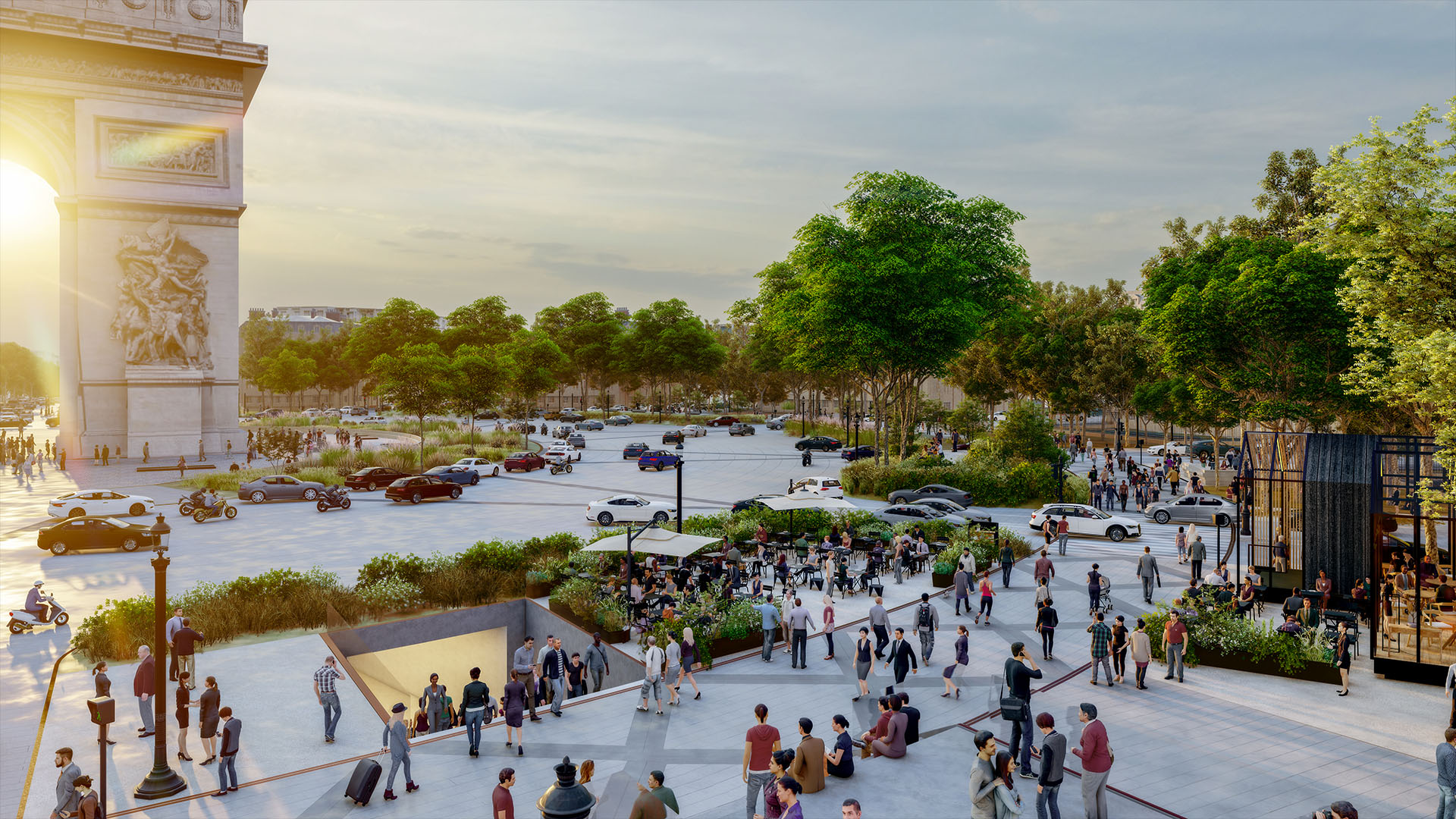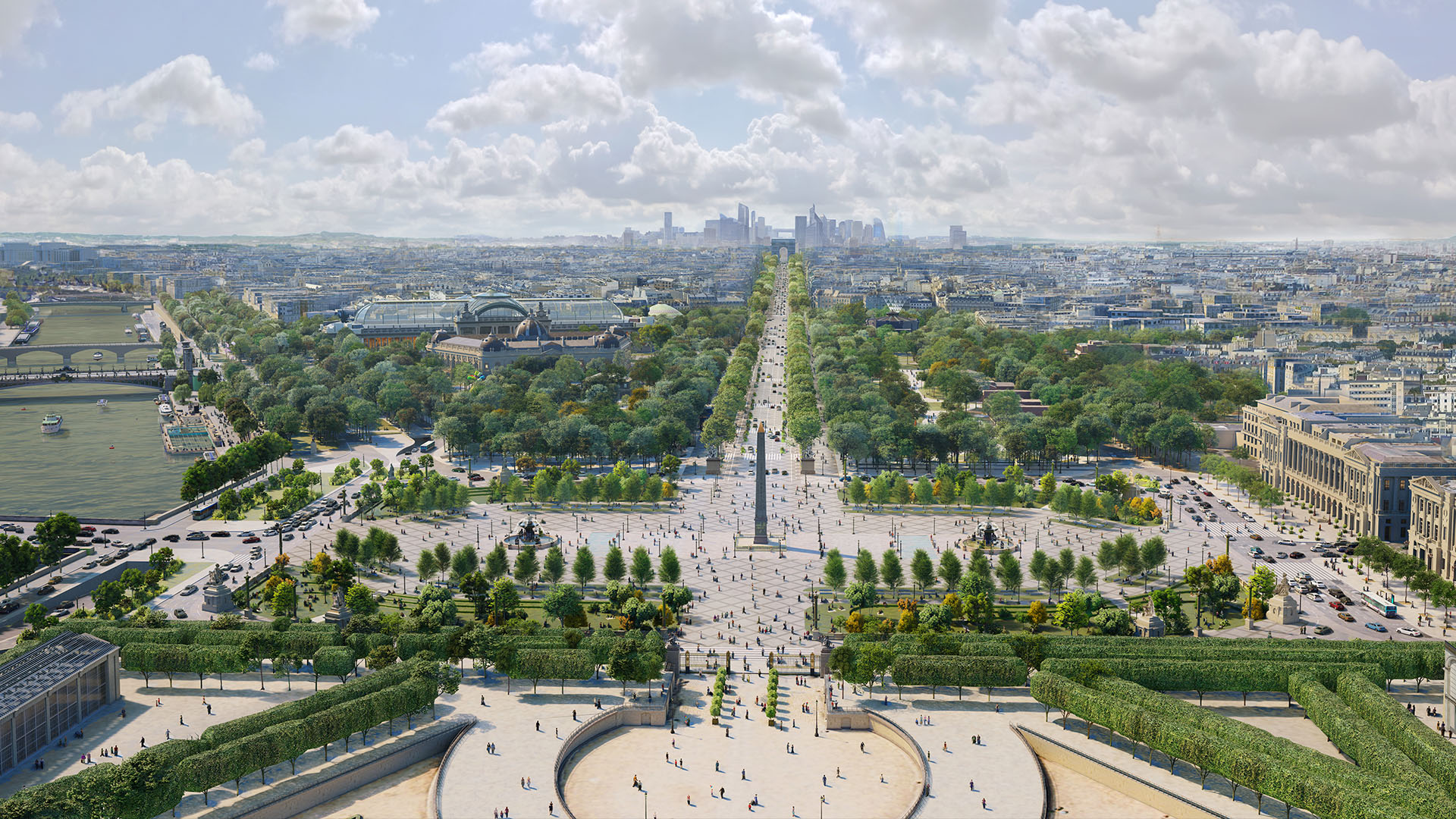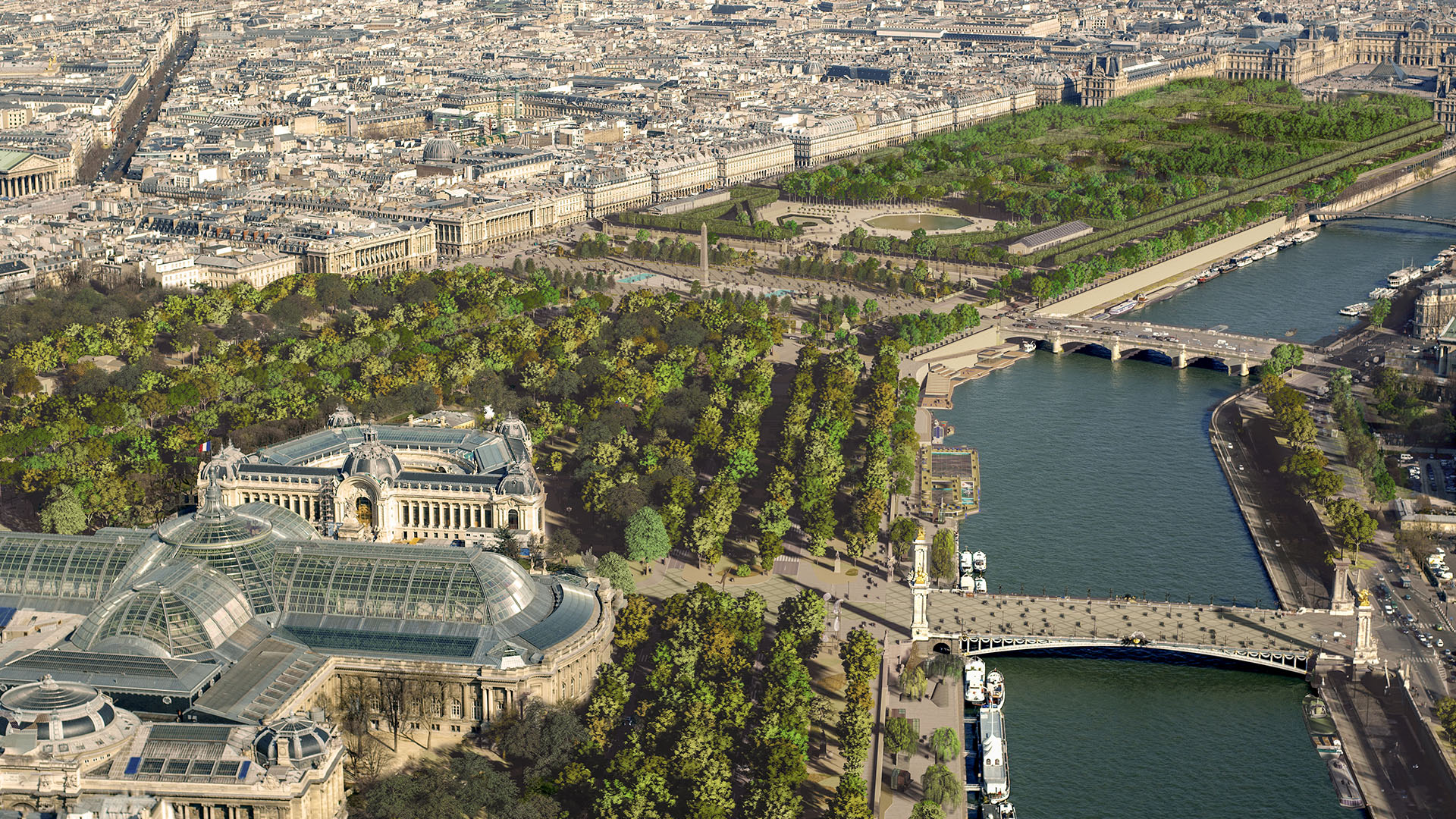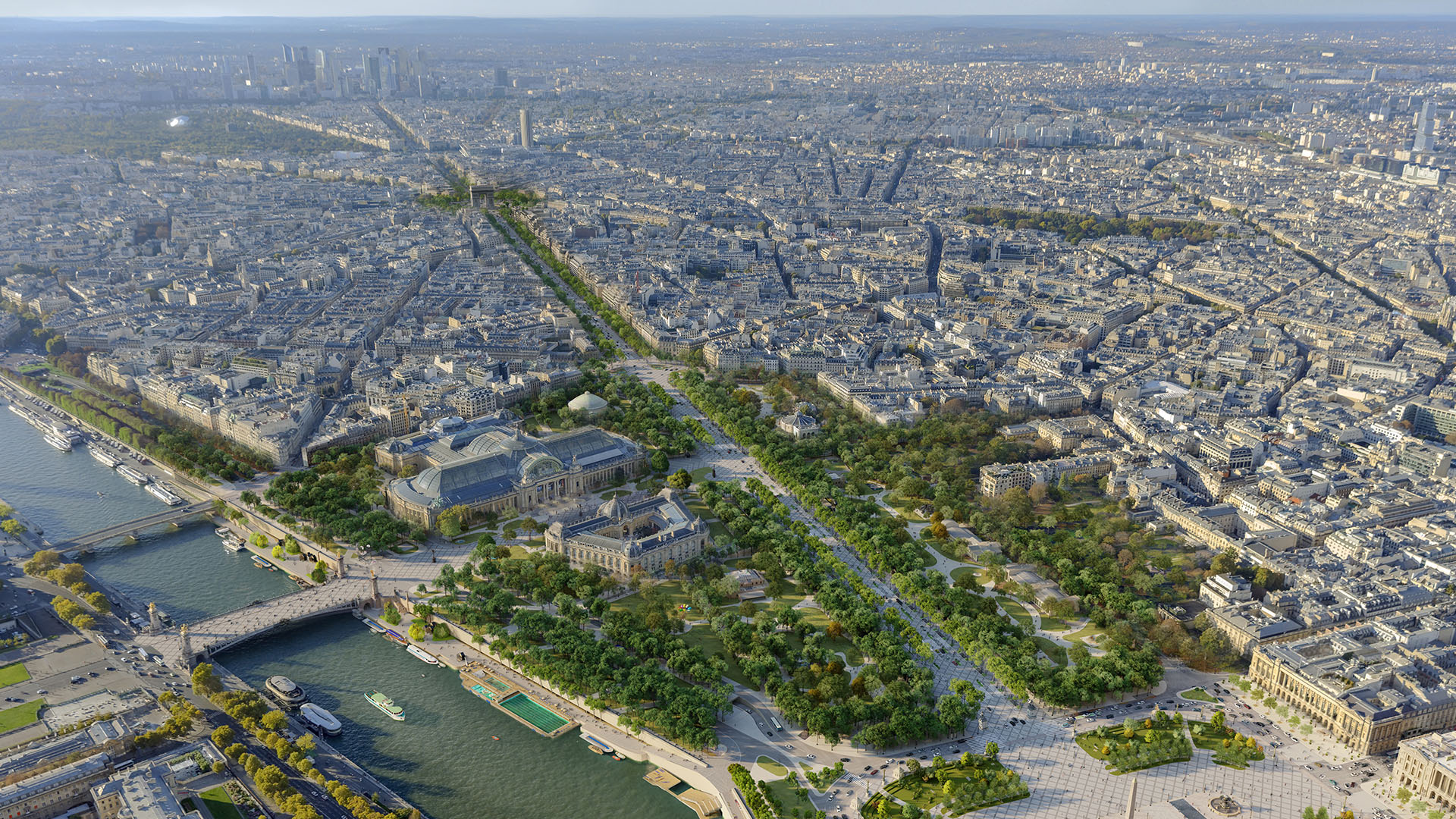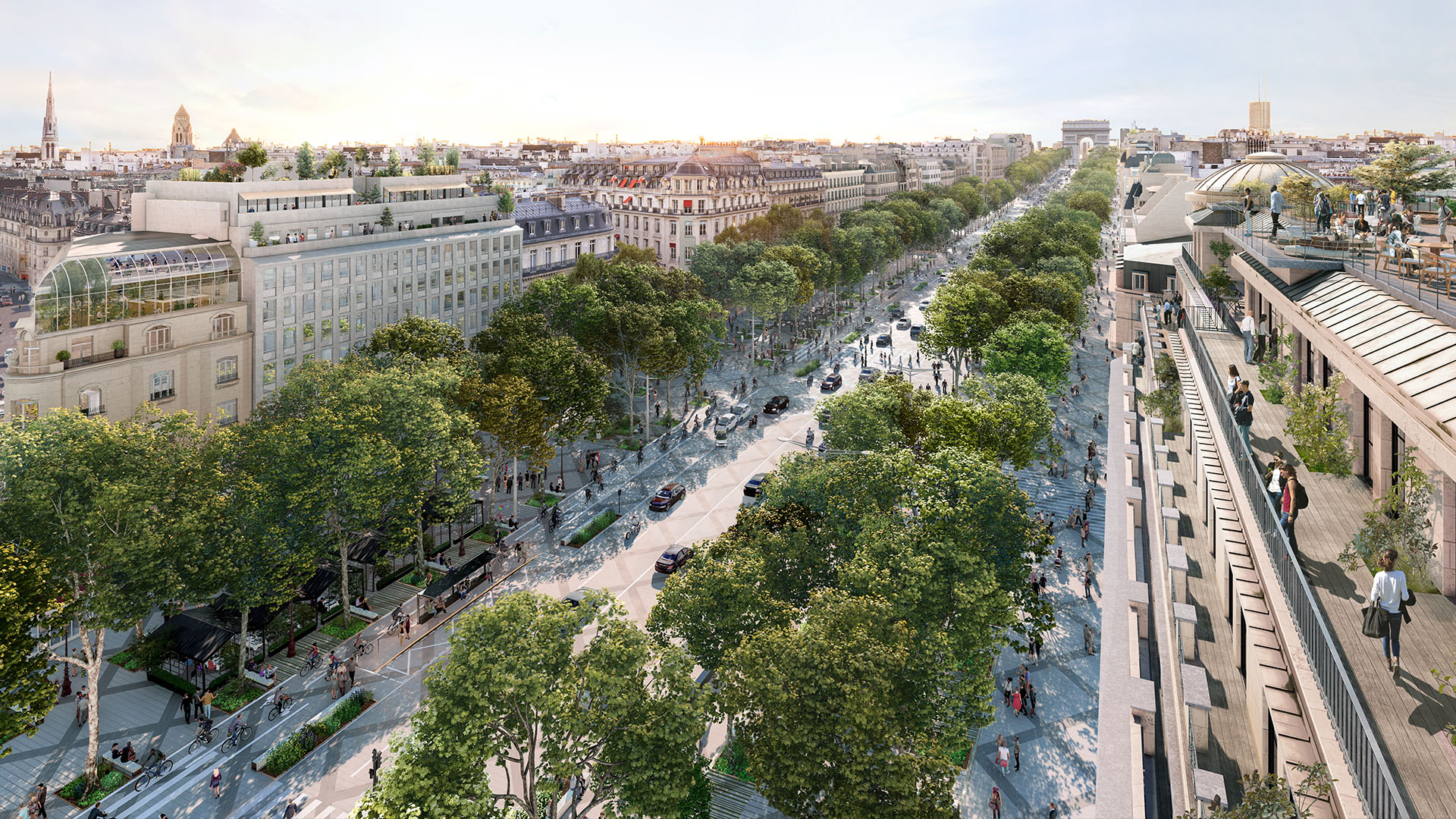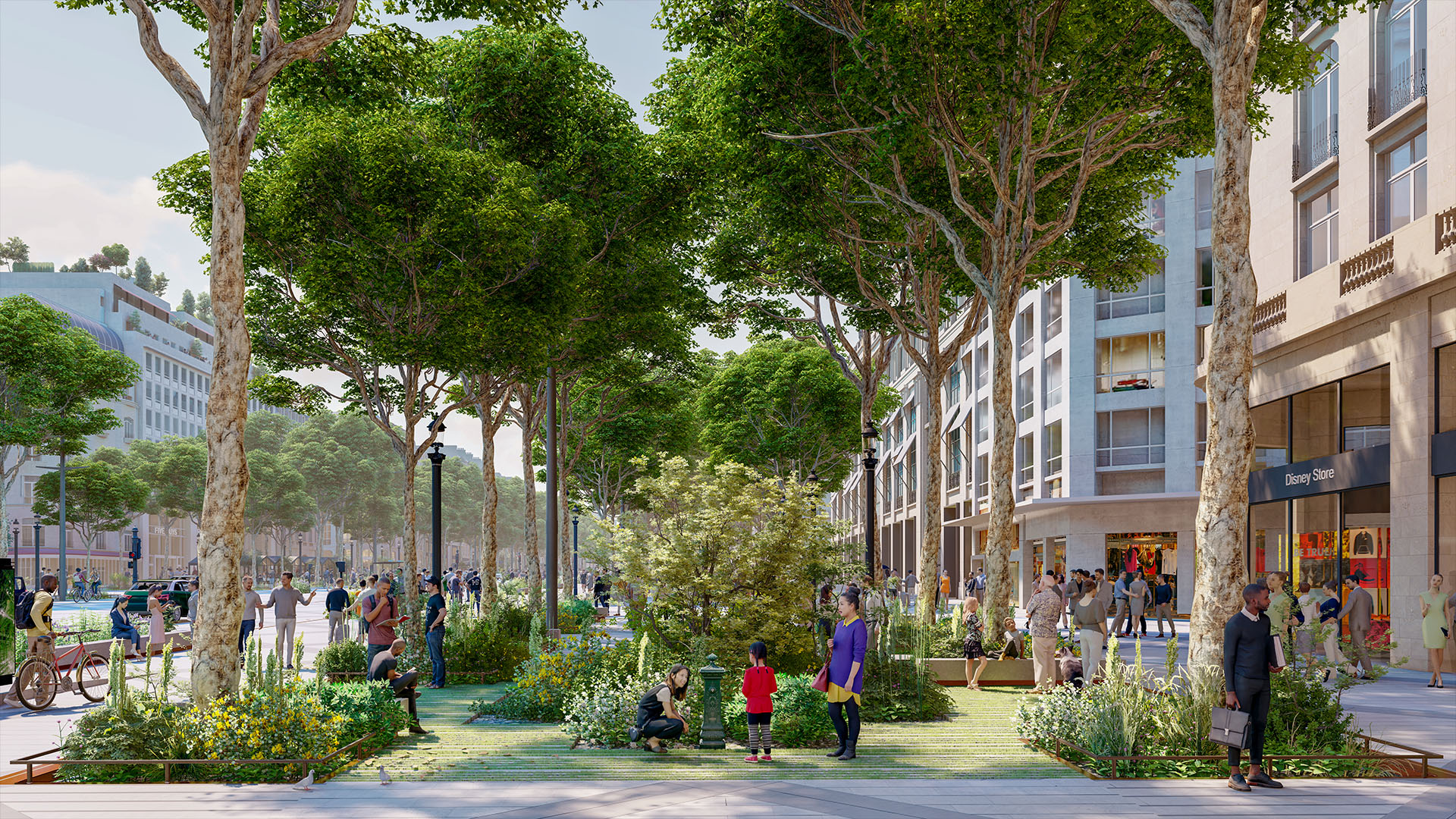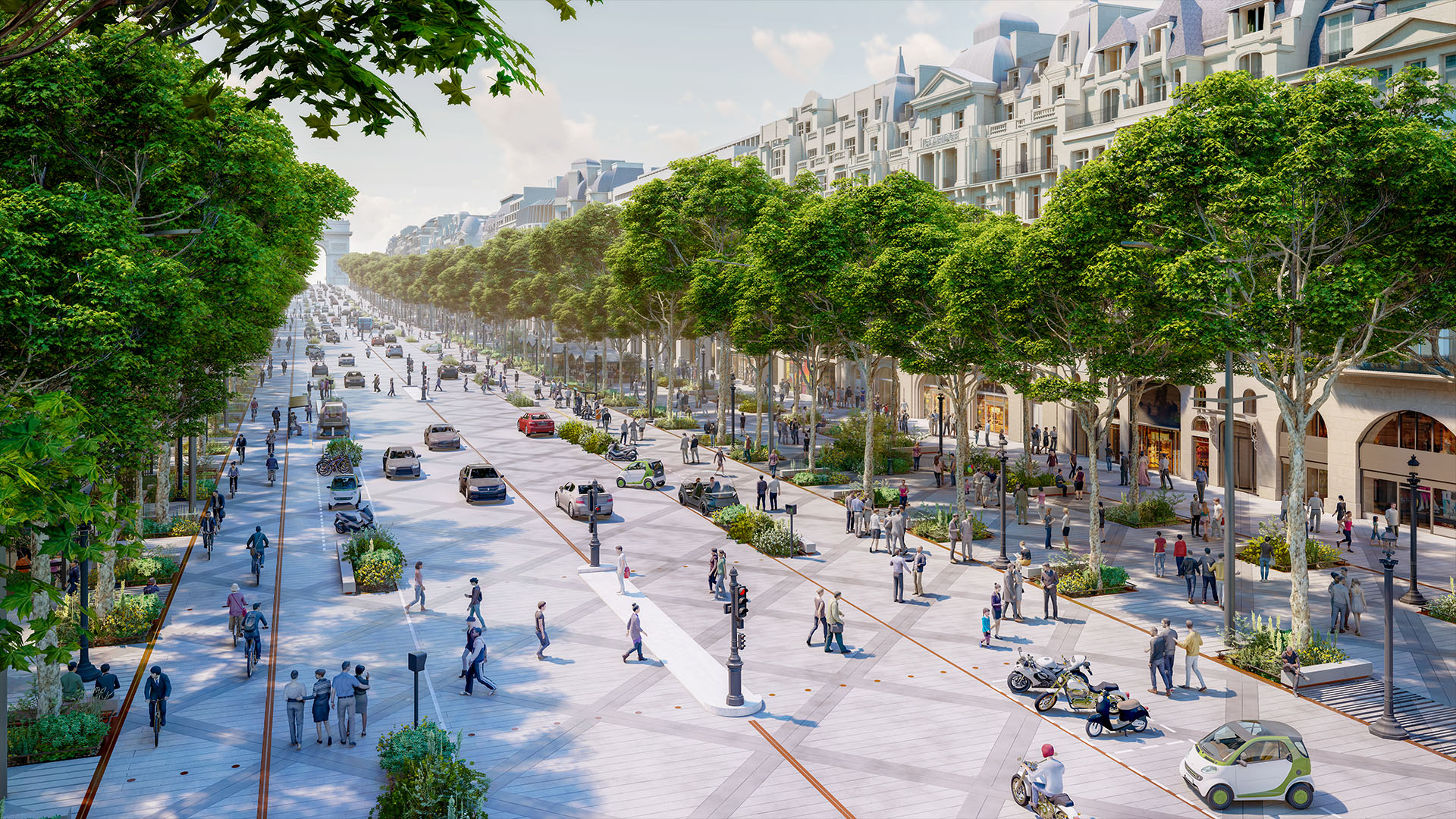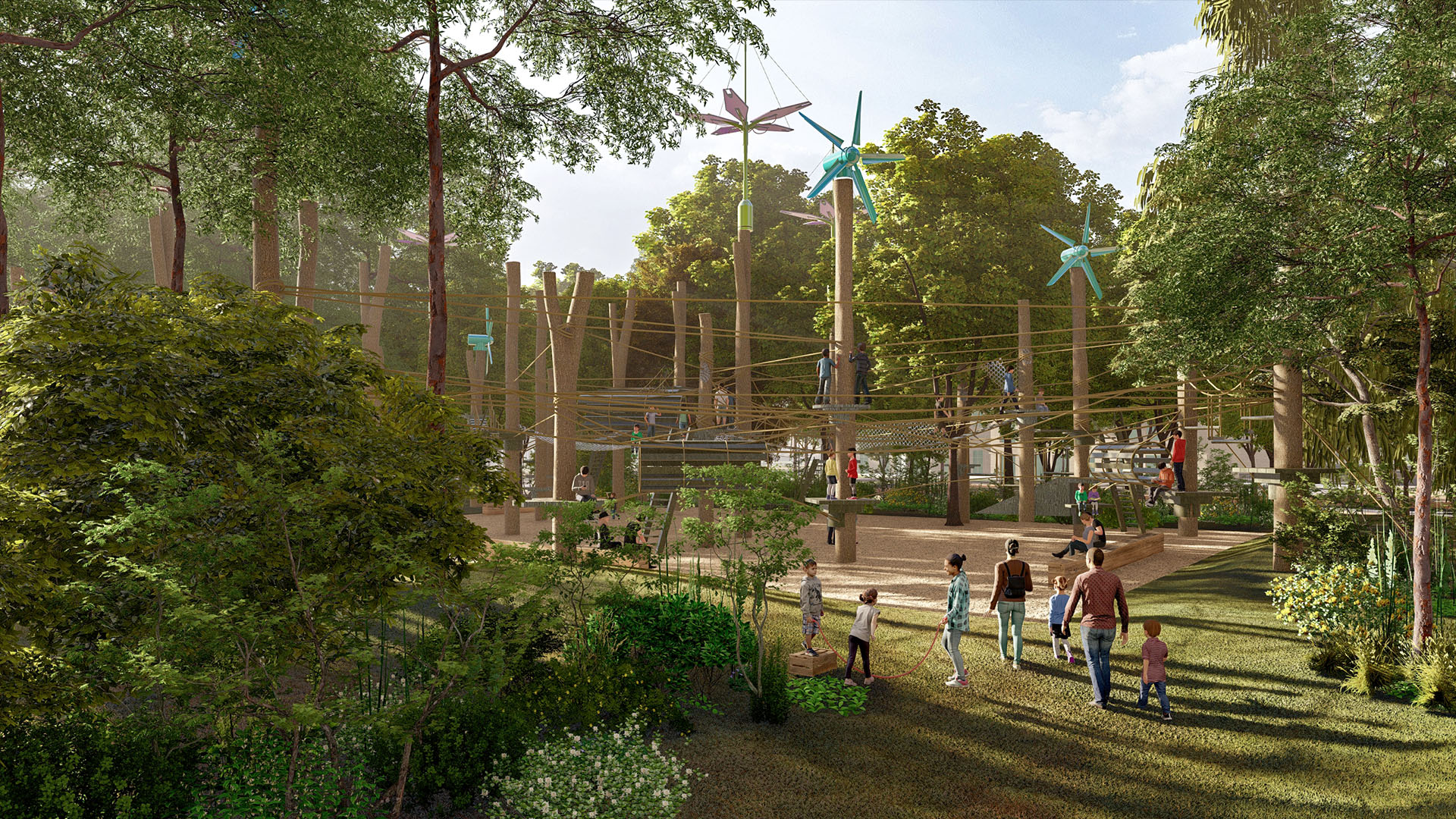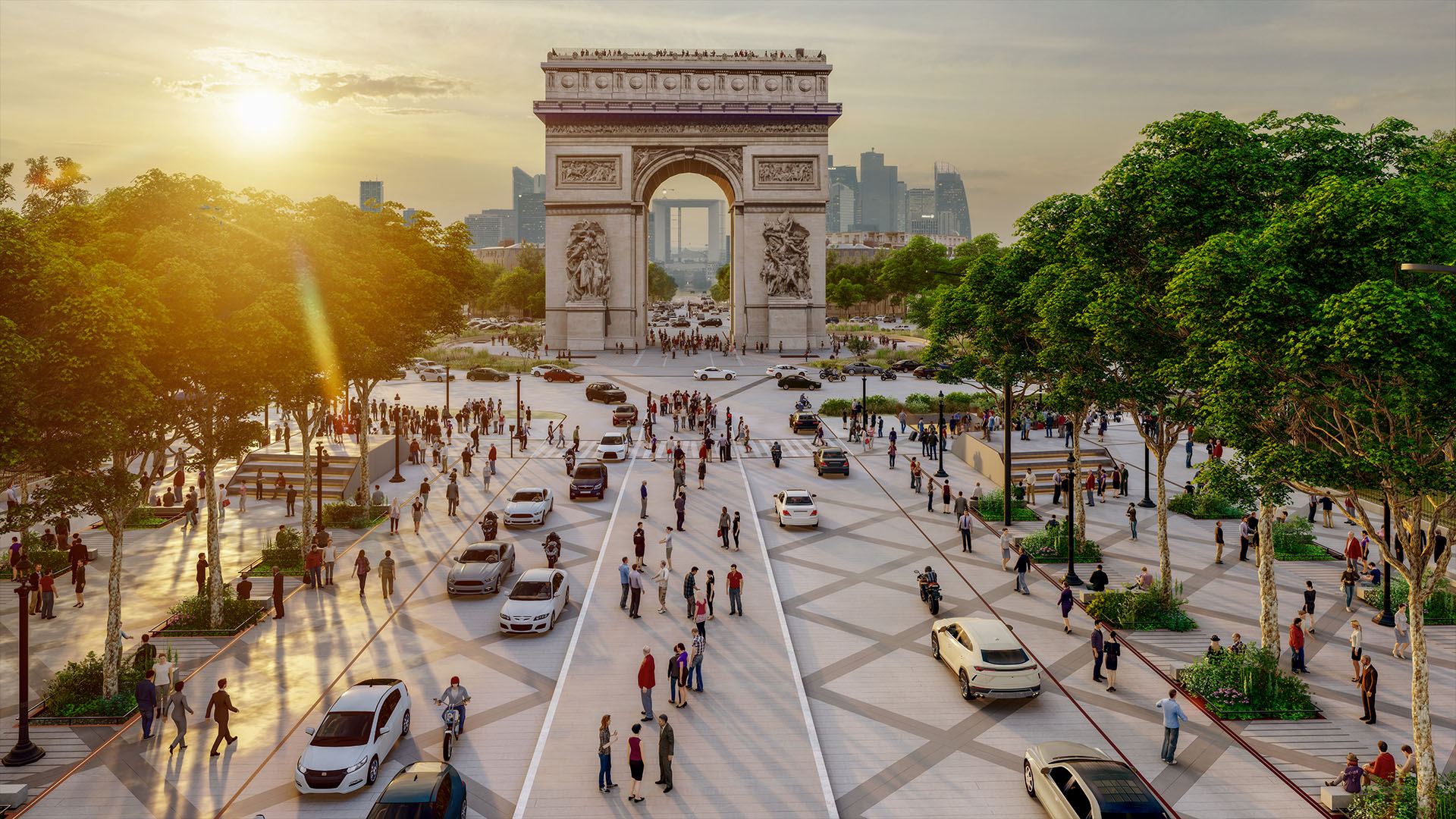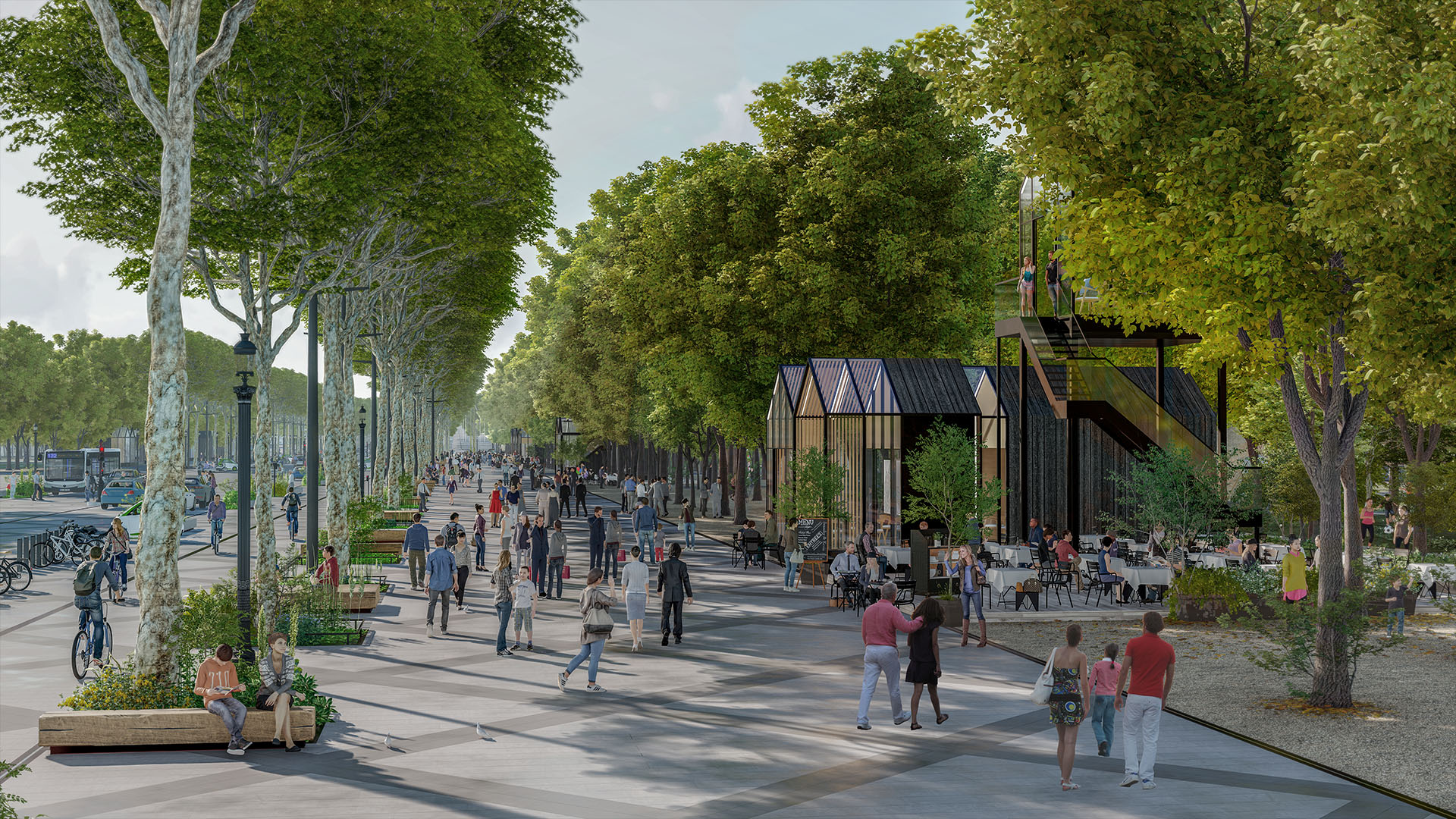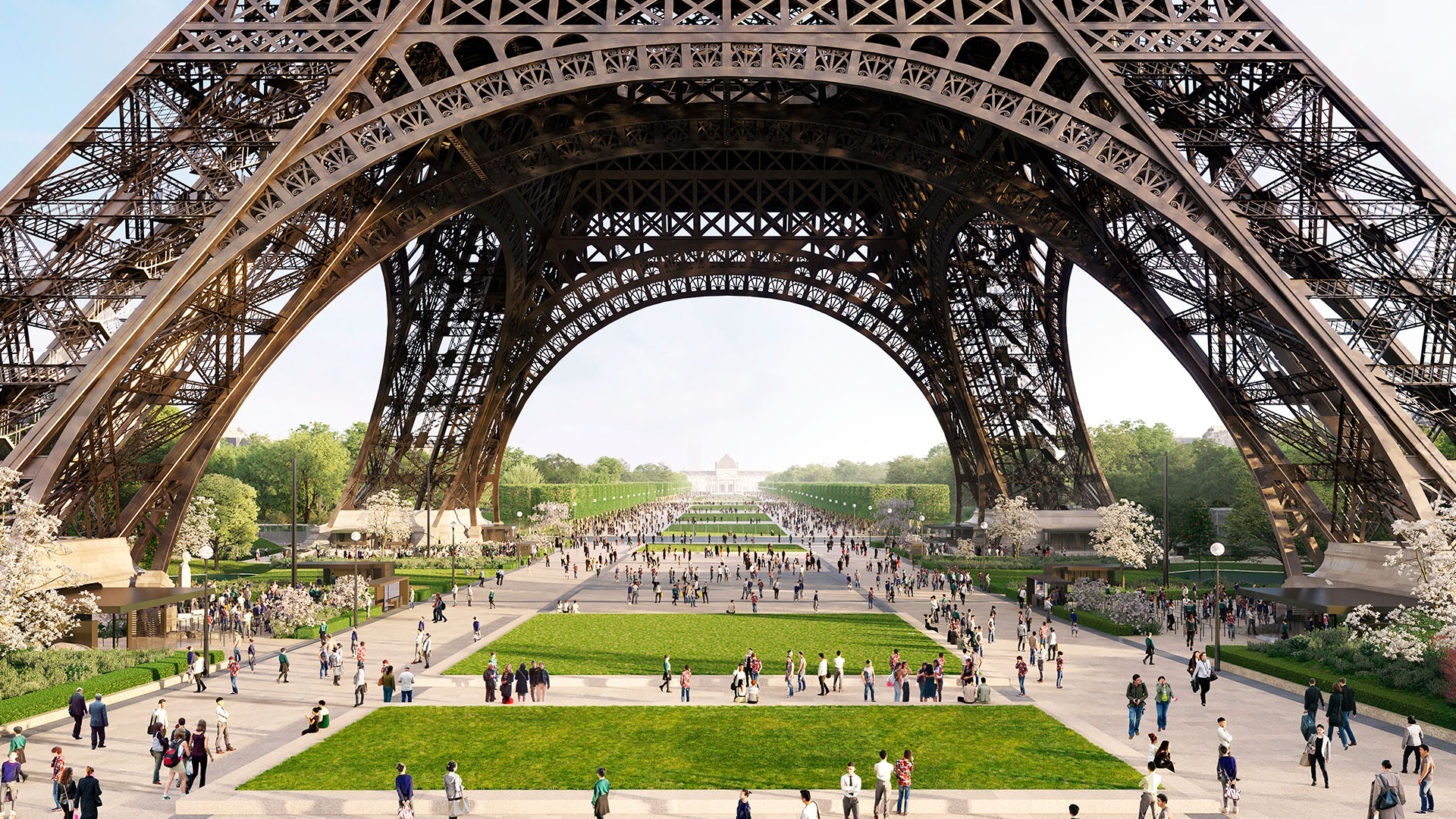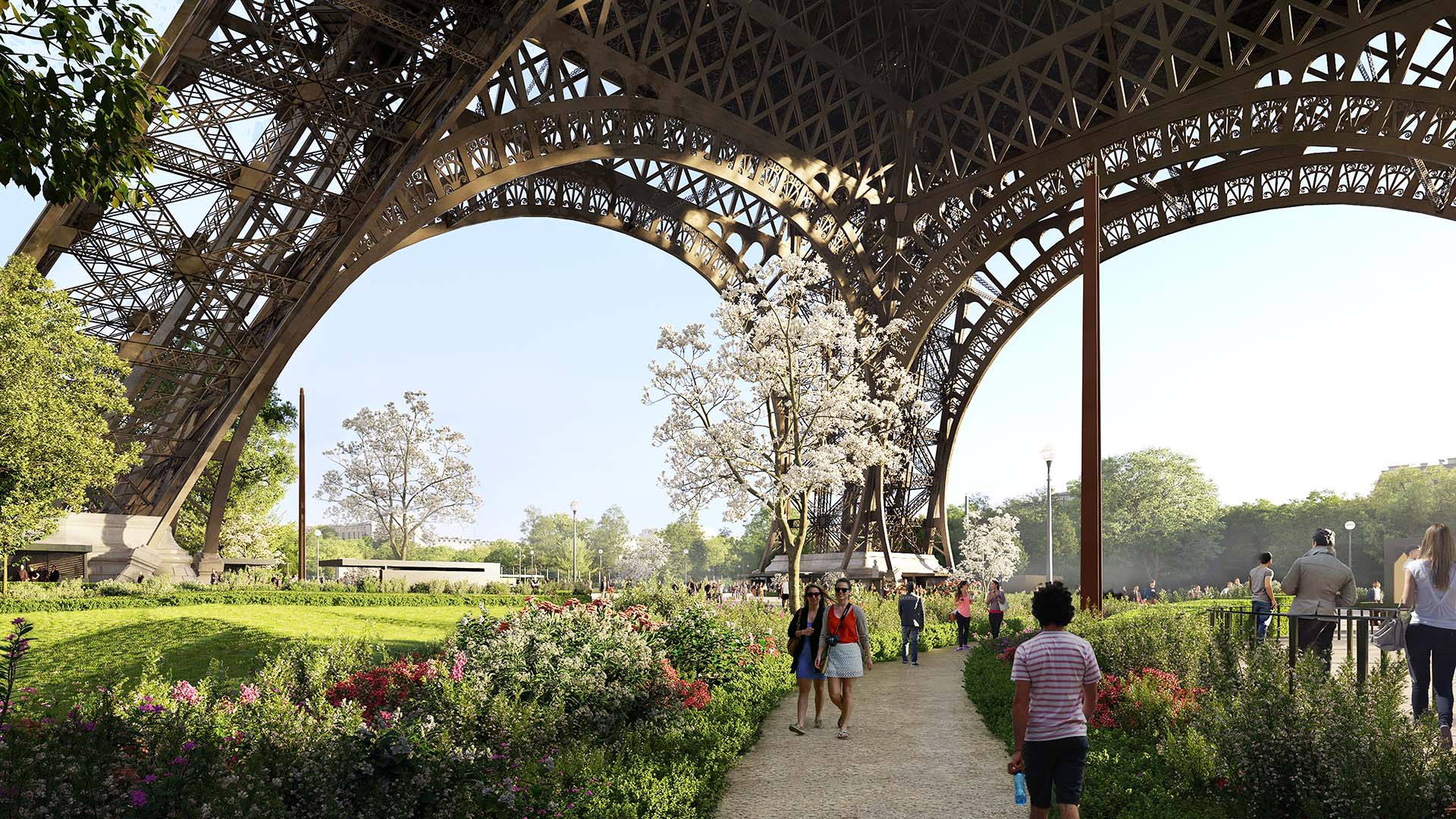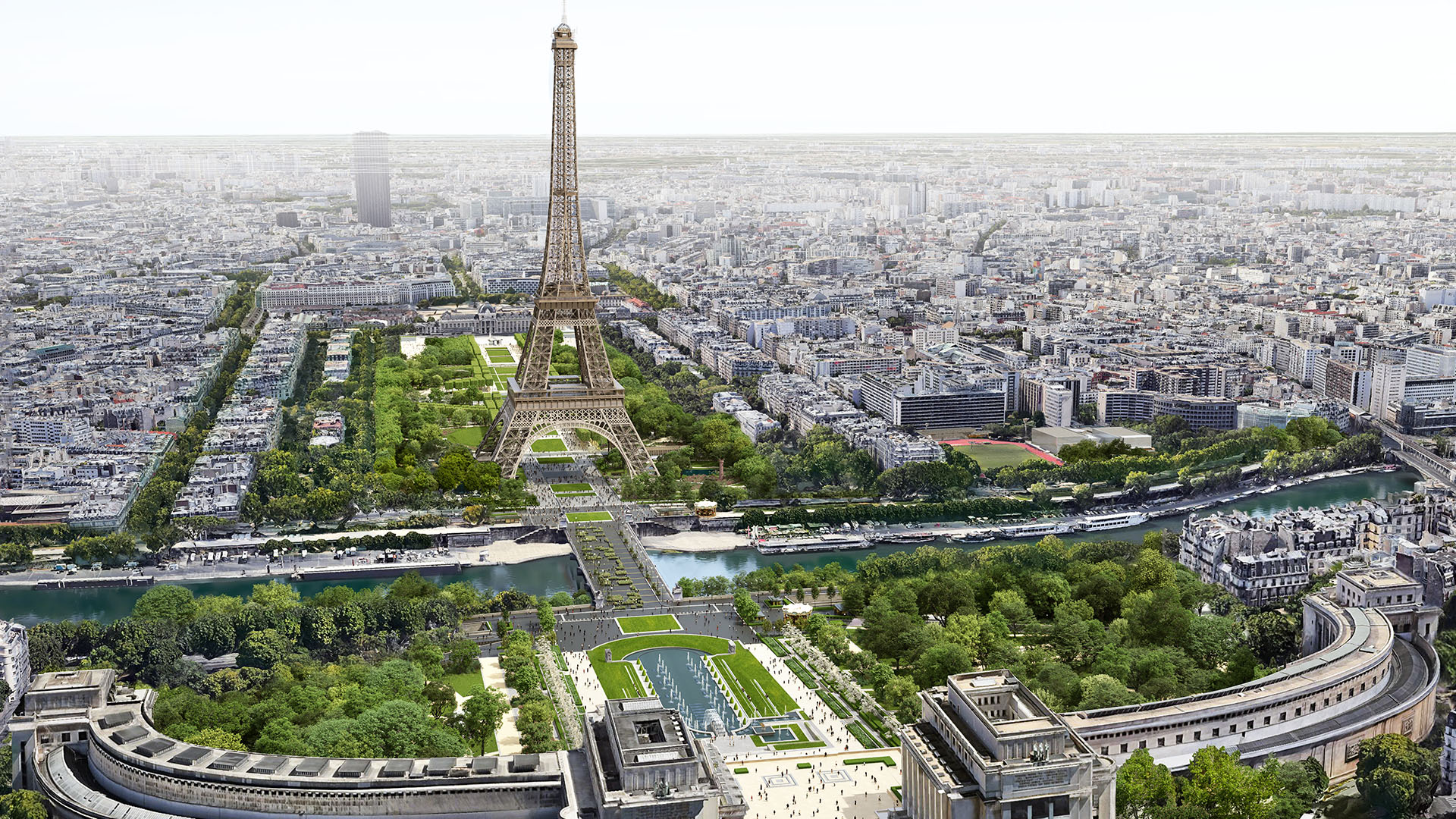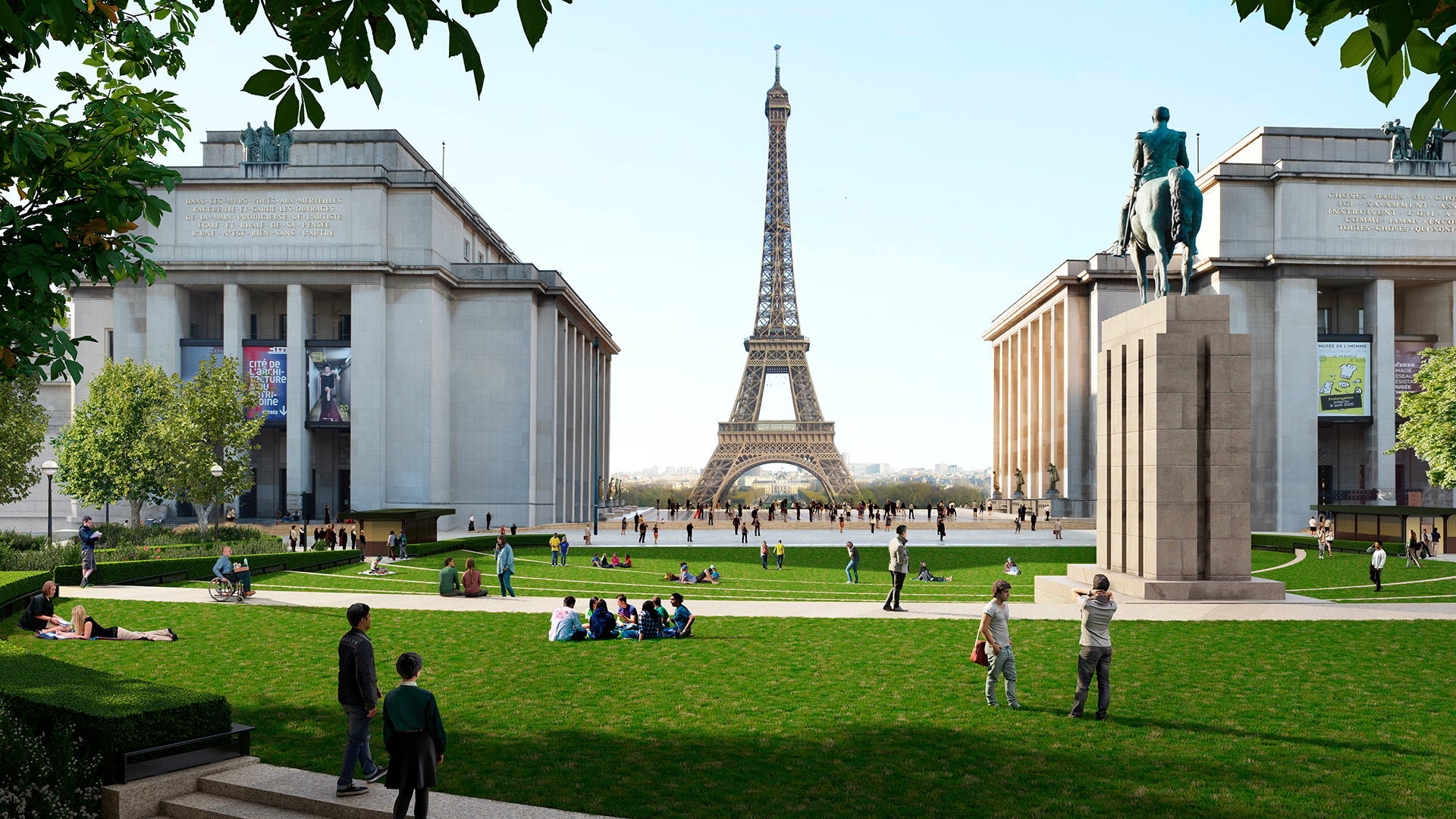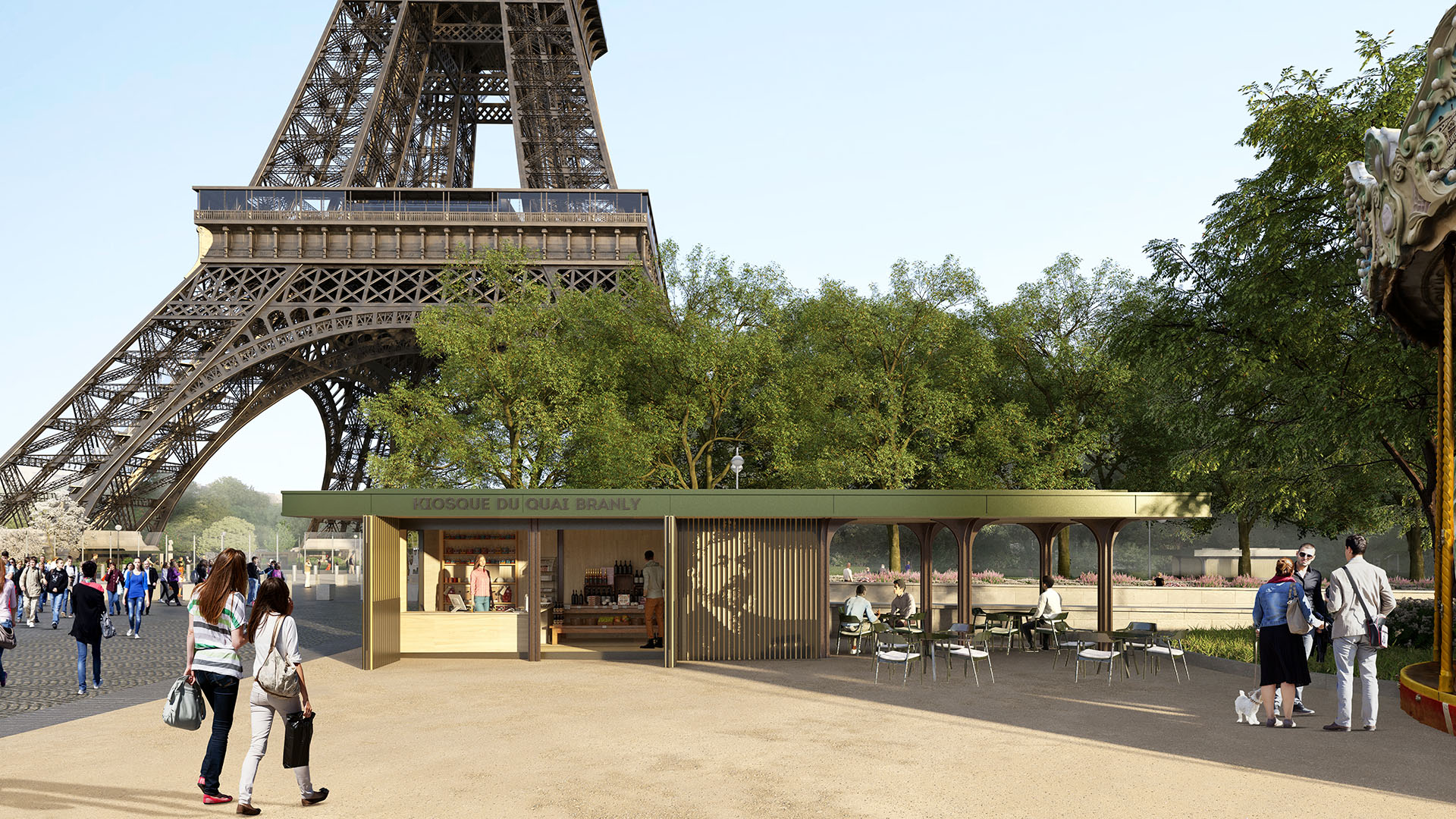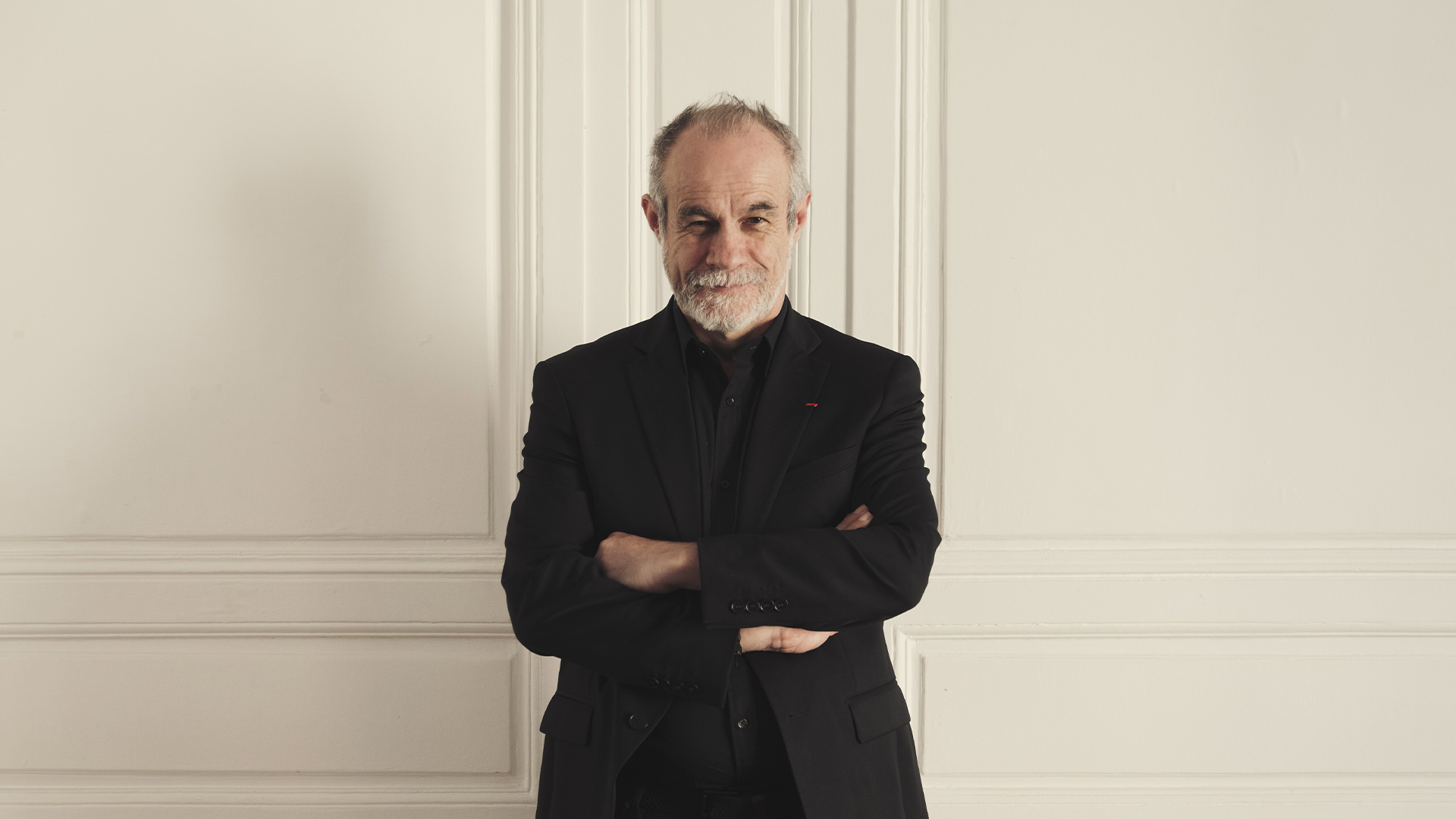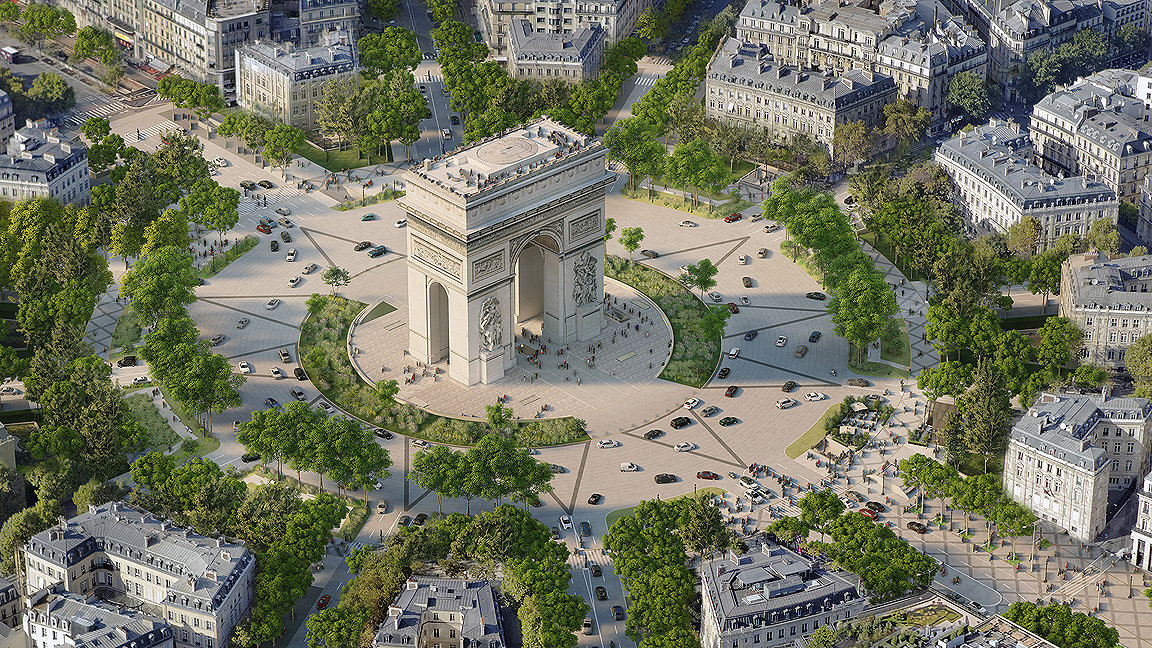
Aerial view of the future of Arc de Triomphe. Photo: PCA-STREAM
Since she was first elected in 2014 and again in 2020, Paris mayor Anne Hidalgo has made it her mission to make the French capital Europe’s greenest city by 2030, with plans ranging from bike lanes to urban parks.
The COVID-19 pandemic has increased support for a more sustainable, healthy urban environment but recent overhauls of streets and the public realm have met with resistance from some quarters. Nonetheless, by the time the city’s 2024 Olympic Games come around, Paris is intending to showcase a city in the middle of a radical transformation.
Perhaps the most eye-catching proposal is a €250m scheme to transform the 1.9km Champs-Élysées into an 'extraordinary garden’, with fewer car lanes and more pedestrian and green areas. ‘Urban forests’ are set to be installed next to major landmarks such as the city hall, opera house and Gare de Lyon, while the banks of the river will be adorned with grass-filled gardens. More than 170,000 trees will be added by 2026, and parks are planned for Place de la Concorde and the Eiffel Tower – all part of the aim to make half of the city’s surfaces planted by 2030.
Planting large trees in a city is no mean feat, as it requires a minimum 1.5m of soil depth, in watertight, reinforced underground structures. Engineering consultancy Arcadis has suggested using the first level of underground parking garages to accommodate soil on the schemes it is working on. Commissioning this study, Paris deputy mayor Emmanuel Gregoire said: “Urban forest projects prove that a lack of space is not an obstacle to the ambition to create greener, more shaded cities. These compact forests will improve the quality of public spaces by proposing a new use for some of Paris’ major squares.”
Another major shift has been a move away from the prioritisation of cars to a greater focus on active and public transportation – from cycling and walking to buses and trams. There are plans to dramatically cut traffic in the city centre by 2022, with cars banned in several central districts. The aim, the council says, is to create a ‘less polluted, greener, more peaceful and safer city’. Traffic was already siphoned away from many central areas during the lockdowns, including the quays that run alongside the River Seine and the Rue de Rivoli. And famous squares such as Place de la Bastille have been redesigned for better walkability.
When Hidalgo came to power, she set about upgrading the city’s cycling infrastructure with an investment of €150m, a mission that was accelerated by the pandemic, when the demand for outdoor transportation options skyrocketed and millions were pumped into adding an estimated 50km of temporary and permanent bike lanes. Today, about a million bike journeys are carried out every day in Paris.
In November, the mayor’s office announced plans to make Paris a ‘100% cycling city’ by 2026. Through an investment of €250 million, this will include the development of 180km of new bike lanes, including making the temporary ones permanent; the prioritisation of bicycles, buses and trams by a new traffic light system; and the tripling of bike parking spaces, with the addition of 130,000 new ones. The city will also invest in improving links between neighbourhoods across the whole city.
“In the past, there were those who would say, we can see how a mid-size city such as Copenhagen can achieve what it has, but the challenge is too great for a larger city,” observed Morten Kabell, co-chief executive of the European Cyclists’ Federation, in an article for the website France Today. “Now, though, we have seen a major metropolis decide to transform itself – and this sets a great example to others.”
It has not all been smooth sailing. Some have pointed out that a lot of these bike lanes are still not adequately separated from motor traffic, and that bikes and scooters are now encroaching on walking space. To that end, the city is now emphasising safety, particularly for pedestrians – proposing more police checks on cyclists, a code for conduct for all street users, and bicycle training for children.
“We have seen a major metropolis decide to transform itself, and this sets a great example to others” Morten Kabell, European Cyclists’ Federation
Other fierce criticisms have come from car users and taxi drivers, concerned by the loss of car parking spaces and greater cycle traffic, as well as citizens more generally bothered by the ongoing construction works required to implement these changes, and the associated pollution. Yet, Hidalgo’s electoral mandate means she has been able to face down criticism and persist with her plans. And despite protests, the reality is that Paris is changing: during Hidalgo’s tenure, car ownership has been falling.
Speaking to the New York Times in 2019, Hidalgo said one of her major goals was to ‘build this city around the individual’. In doing so, she has placed the model for the '15-minute city’ – one in which daily necessities are available within a 15-minute walk or bike ride from your home – at the heart of her programme of urban transformation.
Carlos Moreno, the mastermind behind the concept, says its vision of hyper-proximity and the wider ambition to create a city that is responsive and resilient to climate change, has public backing. And therefore Mayor Hidalgo has strong support for her programme. “Urban policy has to be evaluated in the middle and long term,” he says, “and this is the second year of a five-year term.”
Developing a sense of localism, he says, will require not just transport and green space but the development of local shops, cultural activities and social housing.
“Urban forest projects prove that a lack of space is not an obstacle to the ambition to create greener, more shaded cities” Emmanuel Gregoire, deputy mayor of Paris
Moreno also highlights the importance of equality in implementing all these plans, to ensure that benefits are felt evenly. “It is not possible to fight the dangers of climate change without looking at economic and social justice,” he says.
As well as encouraging development in specific neighbourhoods, the city has to be looked at holistically, he says. “We need to mix social categories, instead of the ghettoisation of poor people in only a few districts on the outskirts. And more power needs to be given to local deputy mayors in different districts.”
More broadly, he believes that resolving disagreements over the future of the city will require a change in mindset: ‘’It's very complicated without a new urban culture, but the question is how do we develop that in Paris?”
Les Champs des possibles from PCA-STREAM on Vimeo.

